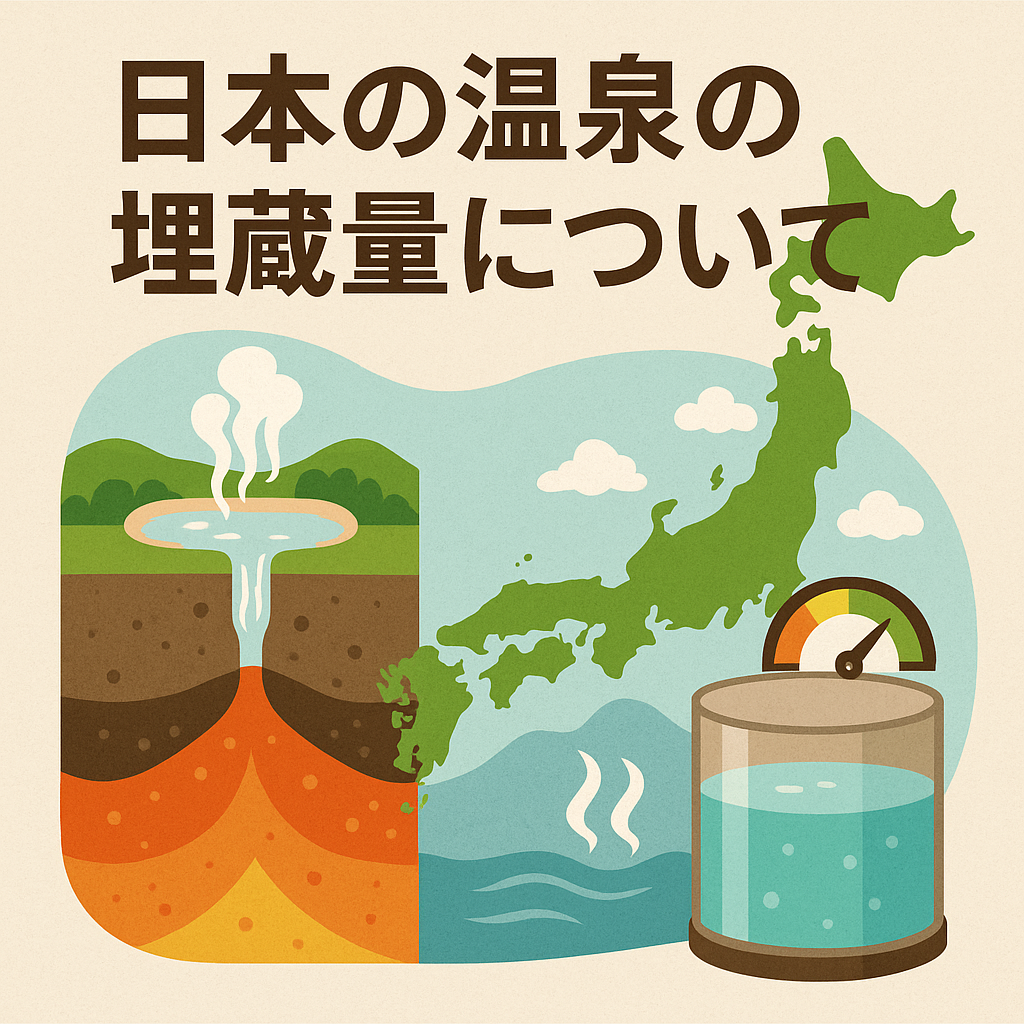♨️ 日本の温泉の埋蔵量について
日本は「温泉大国」と呼ばれるほど、豊富な温泉資源を誇ります。
では、その埋蔵量はどれほどあるのでしょうか?ここでは、日本の温泉資源の規模や特徴、持続性について解説します。
1. 世界有数の温泉資源国
日本には約3,000ヶ所以上の温泉地があり、約27,000本以上の源泉が確認されています。これは世界的に見ても非常に多く、アイスランドやニュージーランドと並ぶ「温泉資源大国」です。
2. 豊富な湧出量
日本全国の総湧出量は1日あたり約260万トンと推計されており、自然の地熱エネルギーを背景にした膨大な供給量が特徴です。このため、各地で多様な泉質の温泉が楽しめます。
3. 地域ごとの特色
日本の温泉は、地質や火山活動の影響で地域ごとに泉質が異なります。硫黄泉、塩化物泉、炭酸水素塩泉など、それぞれ異なる効能や特徴を持つ温泉が各地に点在しているのも魅力の一つです。
4. 持続可能性の課題
一方で、温泉資源は無限ではなく、過剰な掘削や利用によって枯渇のリスクがあります。泉源の保護や持続可能な利用管理が今後ますます重要になります。
✅ まとめ
日本の温泉埋蔵量は世界でもトップクラスですが、それを未来へ引き継ぐには適切な管理と保護が必要です。
温泉は、単なる観光資源ではなく、日本人の暮らしと文化を支える貴重な自然遺産です。
♨️ About Japan’s Hot Spring Reserves
Japan is often referred to as a “hot spring paradise,” boasting some of the richest geothermal resources in the world.
But just how abundant are these hot spring reserves? Let’s explore the scale, characteristics, and sustainability of Japan’s onsen resources.
1. Among the World’s Leading Hot Spring Nations
Japan has over 3,000 hot spring resorts and more than 27,000 registered spring sources. This makes it one of the top hot spring countries globally, comparable to geothermal giants like Iceland and New Zealand.
2. Abundant Water Discharge
Japan’s total hot spring water discharge is estimated at about 2.6 million tons per day. This vast supply is supported by Japan’s active geothermal and volcanic activity, enabling a wide variety of mineral-rich hot springs across the country.
3. Regional Diversity
Thanks to diverse geological conditions and volcanic activity, each region has its own unique hot spring characteristics. From sulfur springs to chloride and bicarbonate springs, each offers distinct therapeutic effects and experiences.
4. Sustainability Challenges
While the reserves are abundant, they are not infinite. Over-extraction and excessive use can lead to depletion. Protecting spring sources and practicing sustainable management are essential to ensure that these natural assets endure.
✅ Conclusion
Japan’s hot spring reserves rank among the world’s largest, but careful management and protection are crucial for future generations.
Onsen are not just tourism resources—they are a cultural and natural heritage supporting Japanese life and identity.

